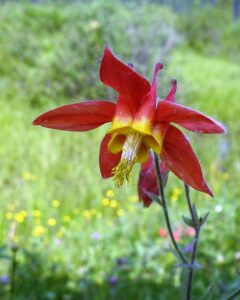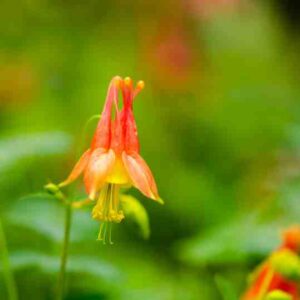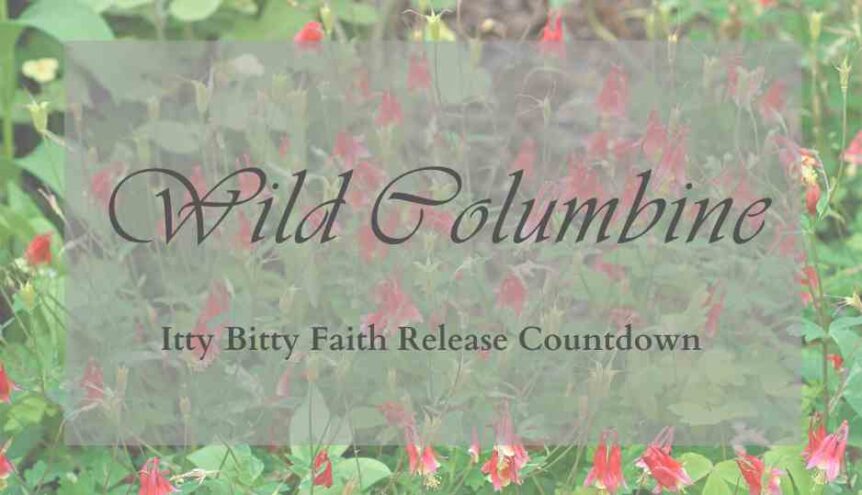 When I think of the abundance of flowers that grow in the wild—without benefit of fertilizer, conditioned soil, and well-timed sprinklers—it reminds me of the abundance of our Lord. Just as He’s created each of us with a unique DNA that gives us our looks, character traits, and giftings, He does the same for the flowers in the fields.
When I think of the abundance of flowers that grow in the wild—without benefit of fertilizer, conditioned soil, and well-timed sprinklers—it reminds me of the abundance of our Lord. Just as He’s created each of us with a unique DNA that gives us our looks, character traits, and giftings, He does the same for the flowers in the fields.
Then some ambitious horticulturist takes what God has created and makes them available for those of us who want to bring a little bit of heaven into our yards. I’m well aware that not everyone shares my affection for gardening—we’re all wired differently. But if you want to see a shadow of what heaven will look like, you just need to take a walk in an untouched landscape.
One of the plants you might come across is wild columbine. Maybe one of the reasons they do so well in the wild (and in my garden) is because they’re deer resistant. Love that feature. Just this morning I was watching a couple mama deer and their babies wandering around my yard. It’s a sight to behold, but I don’t like them in my flowers. They are also drought tolerant once established.
Wild columbine is also called wild red columbine and Eastern red columbine. They will grow in full sun to shade, which makes sense given they were originally only in the wild. They have showy red and yellow bell-like flowers that droop. The deep nectaries (where nectar is secreted) are perfectly shaped for hummingbirds and long-tongued insects, such as honeybees, butterflies, and moths—insects especially adapted for reaching the sweet secretion.
The Latin name for the different species of columbines is Aquilegia. It comes from the word “aquila” which means “eagle.” This refers to the spurred petals that many people believe resembles an eagle’s talons. Their lobed, semi-evergreen leaves are attractive even when the flowers are not in bloom, which I appreciate.
 As with many wildflowers, these plants are tough, easy to grow perennials that first bloom in early April, just about the time the hummingbirds return. They may continue to grow into fall, which makes for a long blooming season, don’t you think? Individual plants only live for four or five years, but they can be easily propagated with their seeds. You can start seeds indoors and transplant them in the fall. But patience is important—germination of seeds may take up to four weeks. Because they’re so easy to grow, they’re perfect in those places of the garden that may be more challenging.
As with many wildflowers, these plants are tough, easy to grow perennials that first bloom in early April, just about the time the hummingbirds return. They may continue to grow into fall, which makes for a long blooming season, don’t you think? Individual plants only live for four or five years, but they can be easily propagated with their seeds. You can start seeds indoors and transplant them in the fall. But patience is important—germination of seeds may take up to four weeks. Because they’re so easy to grow, they’re perfect in those places of the garden that may be more challenging.
As with many wildflowers, there is a history of the wild columbine being used by the Native Americans. No, not medicinally, as one would think—but romantically. It is reported that they used to crush the leaves because they believed it made them more attractive to the opposite sex. A love potion of sorts! In case you were thinking of using it medicinally, know that they are poisonous to ingest, so don’t.
You may not be able to purchase these beauties on Amazon, but be sure to enter here for a chance to win a $25 Gift Card anyway. Maybe you can use them for gardening tools, or seeds, or a book!






